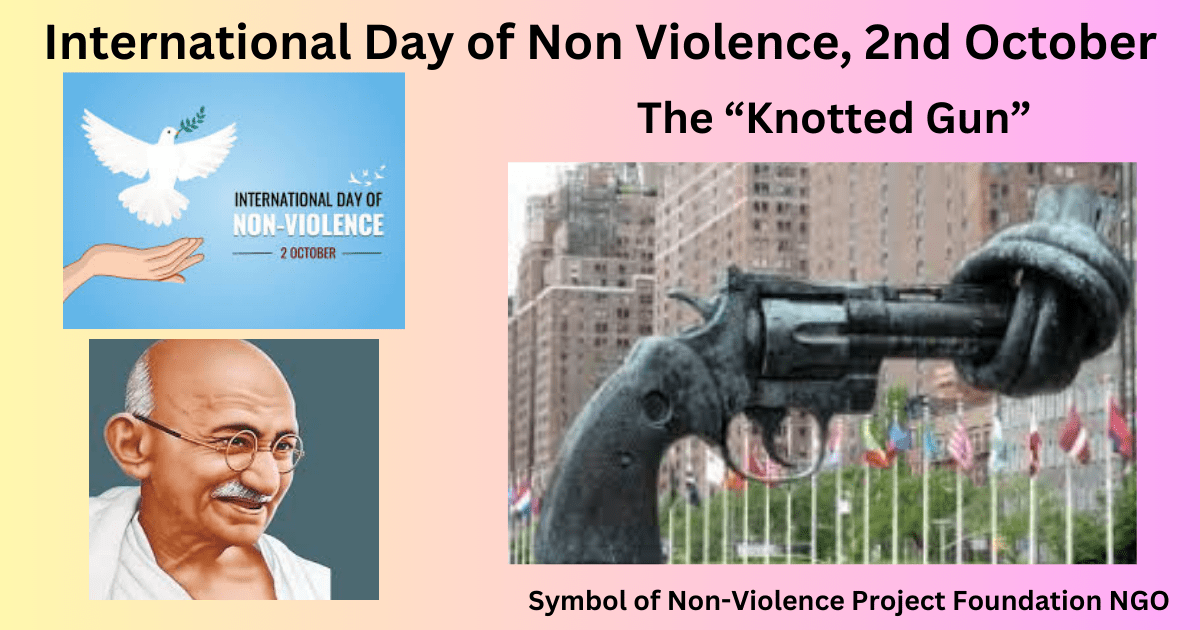International Day of Non Violence: The International Day of Non Violence is observed on 2 October, the birthday of Mahatma Gandhi (Mohandas Karmchand Gandhi), leader of the Indian independence movement and pioneer of the philosophy and strategy of non-violence. Mahatma Gandhi, who helped lead India to independence, has been the inspiration for non-violent movements for civil rights and social change across the world. Throughout his life, Gandhi remained committed to his belief in non-violence even under oppressive conditions and in the face of seemingly insurmountable challenges.
International Day of Non Violence
The principle of non violence — also known as non-violent resistance — rejects the use of physical violence in order to achieve social or political change. Often described as “the politics of ordinary people”, this form of social struggle has been adopted by mass populations all over the world in campaigns for social justice.
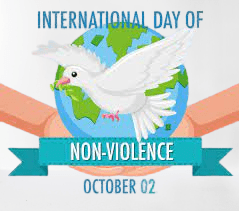
The International Day of Non Violence, celebrated on October 2nd each year, holds a special place on the global calendar. This day marks the birthday of Mahatma Gandhi or popularly addressed in India as “The Father of the Nation“, a towering figure in the Indian independence movement and a pioneer of the philosophy and strategy of non-violence. Beyond honoring his legacy, the day serves as a call to action to educate and inspire young people to develop the skills necessary for resolving conflicts peacefully. Established in 1993, the Non-Violence Project Foundation plays a pivotal role in advancing this cause. This article explores the significance of the International Day of Non Violence, its historical roots, and its relevance in today’s world.
Non Violence Project Foundation
The mission of Non-Violence Project Foundation is to inspire, motivate and engage people to manage and prevent conflicts without ever resorting to violence. Our educational focus is based on both prevention, intervention and on measures that address root issues rather than punish behaviors or feed the blame.
The Non-Violence Project Foundation (NVP) is a non-profit organization whose mission is to inspire, motivate, and engage young people on how to solve conflicts peacefully. It holds violence prevention and non violence education programs for schools and sports clubs around the world.
The Non-Violence Project Foundation, which was registered in 1993 in Bagnes, Switzerland, and has currently offices in 11 countries around the world. Its logo is the iconic Knotted Gun sculpture named Non-Violence. It has educated eight million students, teachers, and sports coaches with programs covering three main subjects: conflict management, self-esteem building, and nonviolence. Sir Paul McCartney, Ringo Starr and Yoko Ono are, among others, ambassadors of the Non-Violence Project.
The Non-Violence Project Foundation was born with the idea to use non-violence to inspire, motivate and engage the young community in positive action and give them the tools and skills to solve conflicts peacefully. In 1993, Jan Hellman and Rolf Skjoldebrand founded the Non-Violence Project.
They believed that the best way to achieve the non-violence mission was to convince schools and sports clubs to include violence prevention and life skills programs into their basic education schedule. The Non-Violence Project Foundation’s concept was first piloted in Sweden with great success. NVP invited the business community to partner in their endeavor and toured roughly 100 cities, spreading the non-violence message. A year later, NVP had reached 100,000 students and initiated 300 local projects in Sweden. In 1995, a crowd of people gathered at the Sergel’s Square in central Stockholm, lighting candles in the shape of the Knotted Gun.
NVP has educated and trained more than eight million students, teachers and sports coaches around the world.
The programs which cover three main subjects – conflict management, self-esteem building, and violence prevention – are constructed to inspire, motivate and engage teachers and students to increase their knowledge of how violence emerges, why conflicts escalate, the importance of a strong self-esteem, and the nonviolent keys to resolve conflicts in a peaceful way. The same approach is used to address the sports community. NVP focus on issues of non-violence, peace, youth participation, interactive exercises, life skills and community development.
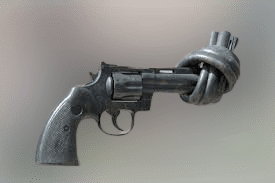
The Non-Violence Project Foundation’s signature logo is the Non-Violence sculpture, also known as the Knotted Gun. It was created by Swedish artist Carl Fredrik Reutersward as a memorial tribute to John Lennon after he was shot and killed on December 8, 1980, in New York City. One of the three original bronze sculptures is displayed at the United Nations headquarters in New York City, the Knotted Gun has become a worldwide symbol of the non-violence movement. Several replicas of this sculpture can be found around the world, including the Olympic Museum in Lausanne, at Victoria & Alfred Waterfront in Cape Town and in the Chaoyang Park in Beijing, China.
Non-Violence, also known as The Knotted Gun, is a bronze sculpture by Swedish artist Carl Fredrik Reutersward of an oversized Colt Python .357 Magnum revolver with its muzzle tied in a knot.
Since 1993, the sculpture has been the symbol of The Non-Violence Project (NVPF), a nonprofit organization that promotes social change through violence-prevention education programs.
History of International Day of Non Violence
The Proposal
In 2004, Iranian Nobel laureate Shirin Ebadi proposed the idea of an International Day of Non Violence. This concept garnered support, particularly from leaders of India’s Congress Party. They actively called upon the United Nations to adopt the idea, recognizing the profound significance of honoring Mahatma Gandhi’s legacy and principles.
UN Adoption
On June 15, 2007, the United Nations General Assembly adopted the resolution to establish the International Day of Non-Violence. This significant decision solidified the annual observance of Gandhi’s birth anniversary as a day to commemorate his non-violent struggle for freedom and justice.
The day is an occasion to “disseminate the message of non-violence…through education and public awareness and reaffirm the desire for a culture of peace, tolerance, understanding and non-violence”
What is Non Violence?
Professor Gene Sharp, a leading scholar on non-violent resistance, uses the following definition in his publication, The Politics of Nonviolent Action:
“Nonviolent action is a technique by which people who reject passivity and submission, and who see struggle as essential, can wage their conflict without violence. Nonviolent action is not an attempt to avoid or ignore conflict. It is one response to the problem of how to act effectively in politics, especially how to wield powers effectively.”
While non violence is frequently used as a synonym for pacifism, since the mid-twentieth century the term non-violence has been adopted by many movements for social change which do not focus on opposition to war.
One key tenet of the theory of non-violence is that the power of rulers depends on the consent of the population, and non-violence therefore seeks to undermine such power through withdrawal of the consent and cooperation of the populace.
There are three main categories of non violence action:
- protest and persuasion, including marches and vigils;
- non-cooperation; and
- non-violent intervention, such as blockades and occupations.
The date of International Day of Non Violence and purpose correspond with those of the Indian national public holiday of Gandhi Jayanti.
Mahatma Gandhi
Mahatma Gandhi, by the name of Mohandas Karamchand Gandhi, (born October 2, 1869, Porbandar, India—died January 30, 1948, Delhi), Indian lawyer, politician, social activist, and writer who became the leader of the nationalist movement against the British rule of India. As such, he came to be considered as the father of the nation in India. Gandhi is internationally esteemed for his doctrine of nonviolent protest (satyagraha) to achieve political and social progress.
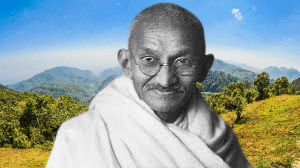
Revered the world over for his nonviolent philosophy of passive resistance, Mohandas Karamchand Gandhi was known to his many followers as Mahatma, or “the great-souled one.” He began his activism as an Indian immigrant in South Africa in the early 1900s, and in the years following World War I became the leading figure in India’s struggle to gain independence from Great Britain.
Known for his ascetic lifestyle–he often dressed only in a loincloth and shawl–and devout Hindu faith, Gandhi was imprisoned several times during his pursuit of non-cooperation, and undertook a number of hunger strikes to protest the oppression of India’s poorest classes, among other injustices. After Partition in 1947, he continued to work toward peace between Hindus and Muslims. Gandhi was shot to death in Delhi in January 1948 by a Hindu fundamentalist “Nathuram Godse“.
Here are some lesser-known facts about Nathuram Godse—the assassin of Mahatma Gandhi—on his birth anniversary
Ramachandra Vinayak Godse, popularly know as Nathuram Godse, was a Hindu nationalist from Maharashtra. He assassinated Mahatma Gandhi at a multi-faith prayer meeting on January 30, 1948, when Gandhi Ji visited the then Birla House in New Delhi for a prayer meeting.
Godse fired three bullets at the chest of Gandhi ji from a close range, ensuring his death. He chose not to escape and was arrested, tried and sentenced to death. It was his third attempt to assassinate Gandhi ji. Earlier in 1944, he had made two attempts to kill him, but were unsuccessful. He was not alone in the assassination conspiracy; he had plotted the assassination with Narayan Apte and six others.
After the 1948 assassination, Godse claimed Gandhi favoured the political demands of British India’s Muslims during the partition of India of 1947.
Godse was born into a Konkani Brahmin family from Baramati, Pune. He got his name Nathuram after his parents forced him to wear a nose ring as they feared that their family was under a curse where their male child died at infancy. He had three brothers and a sister, with all of three boys dying in their infancy.
His parents sent him to study at an English-language school in Pune after he completed his fifth standard education at a local school in Baramati. But he dropped out of high school and became an activist.
It is said that during his school days he had tremendous respect for Mahatma Gandhi and he even participated in civil disobedience movement in 1930.
Godse was inspired by nationalist ideals of Vinayak Damodar Savarkar . He became was a member of Hindu Mahasabha. He often used to write articles in newspapers to publicise his thoughts. Later he started his own newspaper named Agrani, along with his partner in crime Narayan Apte. He was the editor of the newspaper.
After the assassination of Mahatma Gandhi, Godse was arrested and was put on trial at the Punjab High Court, at Peterhoff, Shimla. In 1949 he was sentenced to death. Although Manilal and Ramdas Gandhi, the two sons of Mahatma Gandhi requested for commutation but was turned down by Indian government and Godse was hanged at Ambala Central Jail on 15 November 1949
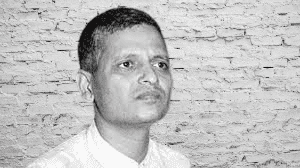
Gandhi Jayanti
Gandhi Jayanti is an event celebrated in India to mark the birthday of Mohandas Karamchand Gandhi popularly known as Mahatma Gandhi. It is celebrated annually on 2 October. He was certainly the most prominent individual in the Indian Independence struggle. Mohandas Karamchand Gandhi has the honour of the title of “father of the nation” because of his leadership during the freedom struggle that led to India’s independence from the British in 1947.On 2nd October’2023, Monday, we will celebrate the 154th Birth Anniversary of Mohandas Karamchand Gandhi.
Gandhi’s first name was Mohandas. ‘Mahatma’ is a title denoting love and respect, which roughly translates as ‘great soul’. It’s thought that a friend of his, Pranjivan Mehta, was the first to refer to Gandhi as ‘Mahatma’ in writing, in a letter from 1909. That was decades before he became a figure of global renown.
Wearing his now-iconic white loin cloth and shawl wasn’t simply a matter of Indian tradition for Gandhi. It was a political move, which he very deliberately adopted on 22nd September 1921. It was part of his push to encourage Indians to boycott foreign-made clothes and embrace homegrown, hand-spun fabric known as khadi. The move utterly reinvented Gandhi’s image for all time.
“Nonviolence means avoiding not only external physical violence but also internal violence of spirit. You not only refuse to shoot a man, but you refuse to hate him”. –Dr. Martin Luther King, Jr.
